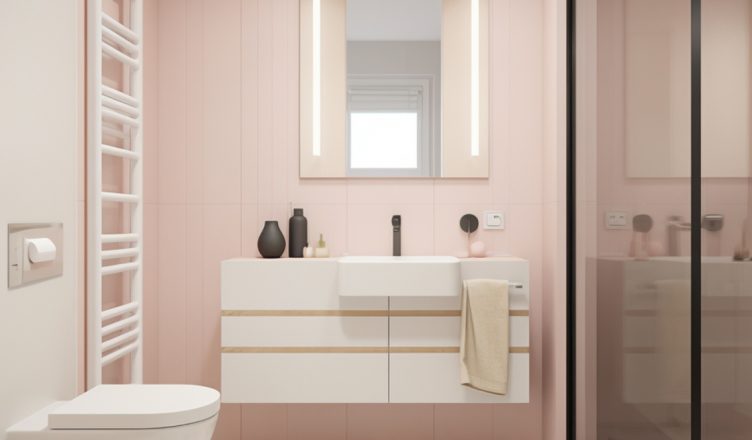Your shower floor seal is a small but crucial part of your bathroom. It keeps water where it should be—inside the shower. Over time, however, these seals can wear out, leading to problems like shower leaks or a leaking shower base. If you’re dealing with these issues, it might be time to upgrade your shower floor seal. Here’s a straightforward guide on when and why to consider a replacement, and the benefits of doing so.
When to Replace Your Shower Floor Seal
1. Visible Damage
One of the most obvious signs that your shower floor seal needs replacing is visible damage. Look for cracks, gaps, or peeling along the seal. These issues can allow water to seep through, which may lead to water damage or mold growth. If you see any of these problems, it’s time to replace the seal.
2. Persistent Leaks
If you notice water pooling around the edges of your shower or dripping from the base, it might be a sign of a leaking shower base. Persistent leaks can indicate that your shower floor seal is no longer doing its job effectively. If you’ve tried fixing the leaks with temporary solutions without success, a new seal is likely needed.
3. Mold or Mildew Growth
Mold and mildew thrive in damp environments. If you see black or green spots around your shower area, it’s a sign of moisture problems. A faulty shower floor seal could be allowing water to escape and create these issues. Replacing the seal can help prevent mold and mildew from spreading.
4. Water Damage to Surrounding Areas
Check the walls, floors, and cabinets around your shower. If these areas show signs of water damage—like discoloration, peeling paint, or warped wood—it might be due to a failing seal. Addressing the problem by upgrading the seal can help prevent further damage.
5. Difficulty Maintaining Cleanliness
If you find it challenging to keep your shower area clean and dry, it could be due to a worn-out seal. An old seal may allow water to escape, creating a breeding ground for grime and soap scum. A new seal can make cleaning easier and keep your shower looking fresh.
Benefits of Upgrading Your Shower Floor Seal

1. Prevents Water Damage
One of the main benefits of upgrading your shower floor seal is preventing water damage. A new, high-quality seal will effectively keep water contained within the shower area, protecting your bathroom floor and surrounding walls from potential damage.
2. Reduces Mold and Mildew
A proper seal helps prevent moisture from escaping and settling in areas where mold and mildew can grow. By upgrading your seal, you reduce the risk of mold-related health issues and keep your bathroom cleaner and healthier.
3. Enhances Durability
Newer seals are often made from improved materials that offer better durability and performance. Upgrading can ensure that your seal lasts longer and performs better, saving you from frequent replacements.
4. Improves Aesthetic Appeal
A fresh, new seal can enhance the overall look of your shower. Old, cracked, or discolored seals can make your bathroom look dated or neglected. An upgrade can restore a clean and polished appearance to your shower area.
5. Increases Property Value
If you’re planning to sell your home, a well-maintained bathroom can be a big selling point. Upgrading your shower floor seal can be a small but effective way to increase your property’s value and appeal to potential buyers.
How to Upgrade Your Shower Floor Seal
1. Choose the Right Sealant
When selecting a new shower floor seal, consider the material and type of sealant. Silicone and polyurethane are popular choices due to their durability and water resistance. Ensure the sealant you choose is appropriate for your shower type and will provide a long-lasting barrier.
2. Prepare the Area
Before installing the new seal, thoroughly clean the area where the old seal was applied. Remove any old sealant, debris, or mold. Dry the area completely to ensure the new seal adheres properly.
3. Apply the New Seal
Follow the manufacturer’s instructions for applying the new sealant. Apply it evenly around the edges of the shower base, ensuring no gaps or bubbles are present. Smooth the sealant with a tool or your finger to create a tight, even barrier.
4. Allow Time to Cure
After applying the sealant, allow it to cure for the recommended time before using the shower. This will ensure that the sealant bonds properly and provides a watertight seal.
5. Regular Maintenance
Once the new seal is in place, regular maintenance is key. Keep the area clean and check periodically for any signs of wear or damage. Address any issues promptly to maintain a secure seal.
Upgrading your shower floor seal is an essential step in maintaining a watertight and functional bathroom. By recognizing the signs that it’s time for a replacement and understanding the benefits of a new seal, you can ensure a dry, clean, and attractive shower area.
